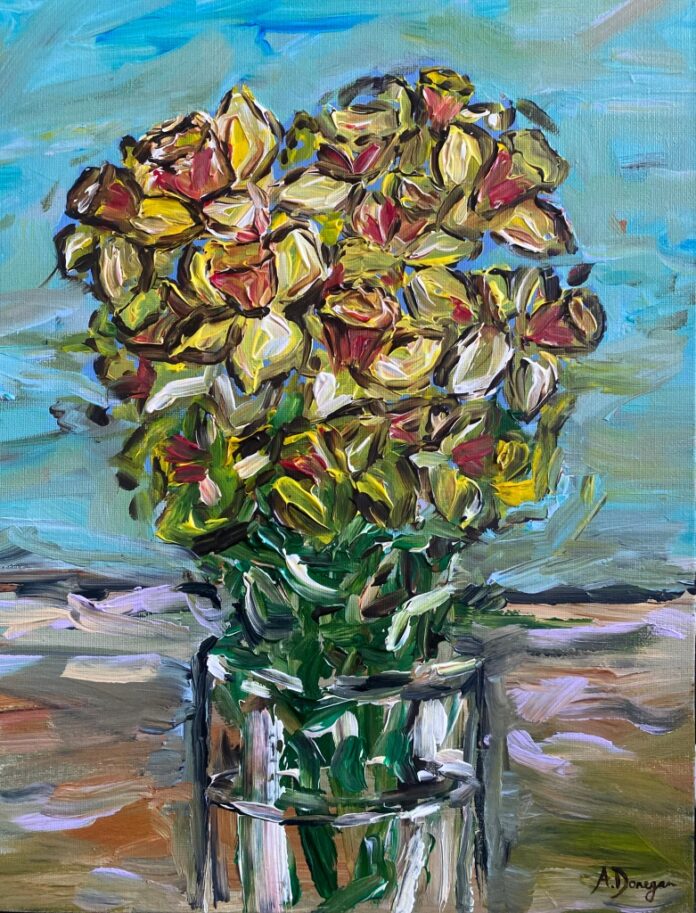“When you’ve met one person with dementia, you’ve met one person with dementia”, said the well-respected Professor Tom Kitwood. This resonates with my experience, as I come to the end of my third and final university art psychotherapy placement working with patients with dementia. My experience has been a challenging but inspiring one. Both uplifting and affirming, I have witnessed how invaluable creative expression can be for people with dementia.
I feel it has been important to offer a large variation of materials, as Kitwood notes, every person with dementia is unique as is their experience of dementia. Materials such as paint proved to be quite intimidating for certain clients, especially those with issues around self-esteem, I feel paint was a material that is associated with having a certain skill level. This link between paint and “good art” was a common theme, which created misunderstanding between the intentions of our group being that of an art therapy group, not an art class.
I feel it has been important to remind group members that they are allowed to “make a mess”, as I feel there has been a shift in engagement with the materials when patients aren’t conscious of spilling paint. Furthermore, I feel with clients, who struggled with knowing where to begin, collage-making or bringing images into the session has been a less intimidating approach than having a blank sheet of paper.
Additionally, when clients have been feeling less motivated, whilst I always honored their wishes to either make art or not make art, I found using sensory materials useful. The simple act of picking some clay and rolling it on the table and in my hand, then passing it around the group often sparked conversations around the sensory elements of the clay. I also felt this increased motivation and created a sense of togetherness. It has felt rewarding to learn new ways to create group cohesion when words alone may not have been as powerful.
I used a shared decision-making process regarding the materials used in the group, ensuring the values of person-centered practice are being considered (McCormack, 2016). I feel this promoted empowerment, which is an important part of the work with elderly clients (Partridge, 2019). Sometimes discussions around materials or the bringing in of old artworks may be unfamiliar to the patients by the time the next group takes place. However, I felt the act of collecting the materials or the artworks helped patients feel held in mind and remembered.
I feel the people I have worked with have inspired me and shaped how I now view art therapy and artistic expression. It has been both rewarding and powerful to witness how communication, attunement, and connection can be achieved through non-verbal means. Such as eye contact, moments of silence, and art-making.
Lastly, something I have found very important during my placement has been the consideration of my well-being and self-care. I have used therapy and artmaking processes to navigate my anxieties around aging and illnesses and to ensure I can hold and contain the anxieties of my patients during therapeutic work.
My journey has been invaluable and I feel my patients have taught me a great deal. As Tom Kitwood famously said, “People with dementia may have something important to teach the rest of humankind. If we make the venture one of genuine and open engagement, we will learn a great deal about ourselves”.
Contributor: Amy Victoria Donegnni, Art Therapy Trainee, Queen Margaret University.

The views expressed do not represent the views of the university or placement context.


